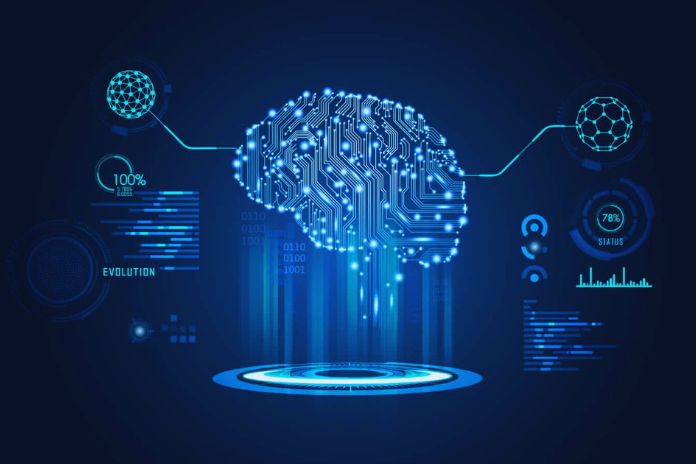Machine learning (ML) is already making a massive contribution to automating business processes. But training algorithms take a lot of time and work and tie up specialists. Automatic machine learning (AutoML) offers a way out – provided the data quality is right. The rapid digital transformation has ensured that the importance of a data-driven business approach for the future viability of companies was also recognized in this country.
This change is primarily driven by the increasing use, dissemination, and democratization of data and the speed at which it is collected and used. One thing is clear: the amount of data analyzed will continue to increase as companies face increasingly complex data sets. In this environment, leaders expect fast, data-driven results. At the same time, business processes are lagging since not all areas of the company are usually data-driven, and there is often a lack of exchange between departments and the corresponding culture in the company.
In many processes, data is still master knowledge in the hands of a few experts, which can lead to a lack of acceptance of the use of data within the teams. This means that companies still need to realize the full potential that data use offers them and are missing many opportunities. The management and efficient use of data remains a key challenge.
Better Data Quality = More Efficient Use For The Business
There is no “one size fits all” solution for data. But more data is available. Better companies can minimize possible business risks, promote growth, achieve business goals, and adapt if necessary. Chief Data Officers (CDOs), if they already exist in the company, are often the lynchpin between data-driven success and failure. But the truth is that technological or logistical challenges slow them down far too often.
As the time from provisioning to data availability continues to be a concern and a key competitive advantage, CDOs need to leverage all available tools and resources in their current tech stack to make operations, especially data analysis, as fast and efficient as possible. This is where the possibilities of artificial intelligence (AI) and machine learning (ML) come into play. “Work smart, not hard” is the motto here, and these innovative technologies play a key role in enabling data teams to get more value from the data they have in less time.
Machine learning already helps in many areas to make recurring processes in companies more efficient through automated processes and thus to conserve human resources – customer inquiries, complaint management, or predictive analytics are good examples. The Problem: Building a robust ML pipeline requires several complex steps. Many companies need more time and even fewer experts.
The Role Of AI/ML In Data Analysis
A key factor standing in the way of effective data strategy and data usage is the fact that real-world data is often not “clean.” more than half (66%) of enterprise data is currently classified as low quality. However, when the information is of low quality, teams can easily become bogged down and spend too much time cleaning up and preparing the data for analysis.
Because data is often created and shared across multiple systems, external data can significantly impact the internal decision-making process, resulting in additional time spent cleaning and accessing high-quality data. Automation can make all the difference here. By reducing the human factor involved in data analysis, data teams have more time to focus on other challenges instead of tediously preparing the data for further use. In this way, companies can improve data access flows and promptly get a unified view across different viewpoints.
It Depends On The Quality Of The Data
When data quality is judged to be good and reliable, automated machine learning (AutoML) can help accelerate insights and automate certain processes, such as intelligent manual processes, such as data extraction from PDFs, labeling, or classification. This automation accelerates the flow of data and saves time and enormous costs for the teams involved. Most ML platforms are black box models – explaining the models in detail is difficult. This is a crucial factor for the success of many ML projects since the appropriate know-how is required here.
One of the challenges for users is understanding the stats or the logic behind them. AutoML is a technique for automating some of the most repetitive and time-consuming machine learning (ML) tasks. It helps users who are not data scientists to use machine learning. Knowing the exact logic behind ML is, therefore, no longer necessary. However, understanding the impact on business and the relevance of the results is a crucial benefit.
The Next Step To A Data-Driven Culture
Ultimately, understanding and utilizing the full potential of AI/ML in data analytics can mean the difference between a data-driven company and one that needs to catch up to the medium-term competition. Automation is key to a robust data strategy that includes self-service data analysis tools, flexible data flow, and access designs. More individual teams can contribute to the data journey as CDOs and data stewards within organizations take full advantage of AI/ML.
In doing so, companies are creating a data-driven culture that many aspire to but still need to achieve. Sophisticated data analytics solutions provide tools, frameworks, and integrations that simplify the use of AutoML. This allows users to run AutoML experiments seamlessly from within the database itself. In this way, the time-consuming provision of models and prediction infrastructure is eliminated, and ML processes can be brought one step closer to the data.
Also Read: Youtube Ads: Google Ads On Youtube

